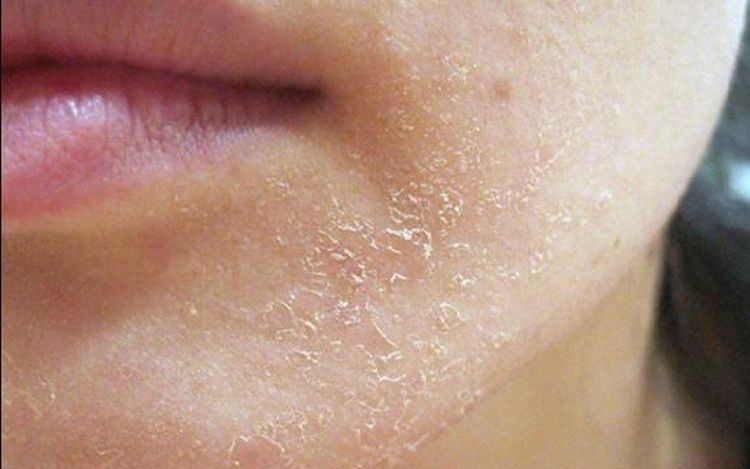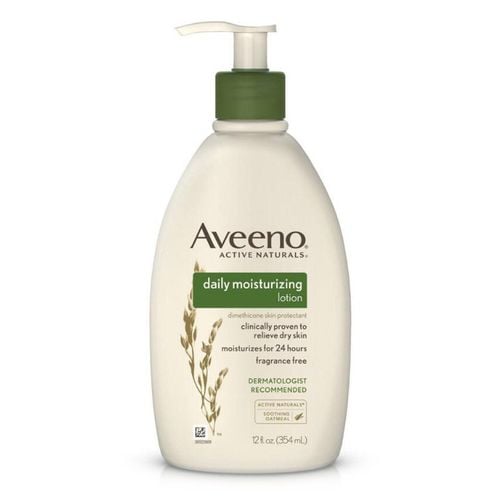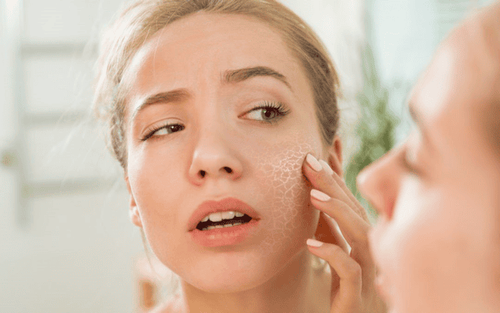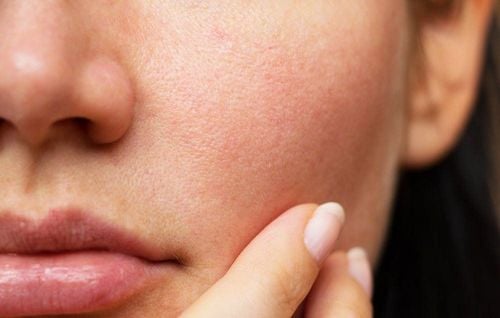This is an automatically translated article.
Many people have dry skin, some have oily skin, others can have both dry and oily skin at the same time and are called combination skin. For people with this skin type, oil will pour more in the T-zone (including forehead, nose and chin), leading to frequent acne, cheeks or some other areas can sometimes be dry.
1. Is it possible to have both dry and oily skin at the same time?
Although it sounds counterintuitive, you can have oily skin and oily skin at the same time. Specialists often refer to this condition as combination skin. Combination skin means you can be both oily and prone to acne, blackheads, and other oil-related acne problems. However, you can take skin care steps to overcome problems associated with this skin type.
Dry skin and oily skin often occur in people with chronic dehydration, the main cause behind is genetic factors.

Da hỗn hợp nguyên nhân sâu xa do yếu tố di truyền
2. How to recognize both dry and oily skin?
Before determining the right skin care, you need to know about your skin condition. Here are some signs of combination skin, including:
Oily T-zone: The nose, chin and forehead area are oily and look shiny. This is called the T-zone. Large pores: You will easily see pores on the face, especially the areas on the forehead, nose and sides of the nose. Dry skin: The cheeks and skin under the eyes in people with combination skin often feel dry, sometimes even flaky. If you are not sure if the above signs are true for your skin, you can apply the following simple test:
Step 1: Wash your face thoroughly with soap or mild cleanser Gentle
Step 2: Dry the skin with a towel, then wait 20 minutes.
Step 3: Don't touch your face during this time or put anything on your face (like moisturizer).
Step 4: After 20 minutes, look at your skin in the mirror. If your T-zone is oily but the rest of your face feels tight, then you probably have both dry and oily skin.

4 bước để kiểm tra về tình trạng da của bản thân
3. What causes both dry and oily skin?
Genetic factors are the main reason why you have a combination skin. In addition, some types of products that you use for your skin are not suitable, have high cleansing properties, so they irritate the skin, causing the skin to produce more oil. Besides, other factors also have a certain impact on the skin, such as living habits, living environment. Some people go from normal skin in the hot season, but in the cold season, they switch to combination skin.
Only when going through a relatively large change in hormones or living environment causes a change in skin type, but as usual, you can only live with it by choosing products proper skin care. In particular, for those who have both dry and oily skin at the same time, the care becomes even more complicated.
For ease of care, people continue to classify skin with different characteristics. It is also a combination of dry skin and oily skin, but in each person, the dryness or the oily nature will be somewhat superior. Therefore, combination skin is divided into 2 types based on this characteristic:
Oily combination skin: This is a type of dry skin that is naturally oily because the oily skin occupies a larger area. Not only the T-zone, but other areas such as the skin around the forehead, the sides of the nose, and the chin are also oily. This type of skin in the hot season causes stickiness like oily skin, in the cold season, it dries on the cheeks. Combination skin is dry: Dry skin occupies most of the face area. The cheeks are still dry and only the T-zone appears oily even in the hot season. The skin on the sides of the nose and chin is peeling in the cold season.

Người có da bị khô thường xuyên bị bong tróc ở vùng cằm vào mùa lạnh
4. Care for both dry and oily skin
You can take many steps to combat the problems associated with your dry and oily skin, although the cause of this condition is due to genetic factors. Here are a few of the most common treatments:
Nutrition: Most people with dry, oily skin get breakouts from using moisturizers or lotions. While you still have to use a moisturizer or lotion to keep your skin hydrated, you can, however, do this by incorporating good oils in your diet or taking acid supplements. fatty acids, such as fish oils with docosahexaenoic acid (DHA) and eicosapentaenoic acid (EPA) and plant sources with alpha-linolenic acid (ALA). Oil-free sunscreen: Always use sunscreen whenever you're outside. However, people with combination skin often do not like to use sunscreen because sunscreen will cause acne. Choosing an oil-free sunscreen is a safe and effective option. These are often labeled as mineral sunscreens. Medications: Your specialist may prescribe you a medication to control your skin condition, which is usually treated topically. Combination skin is easy to control if you take the right steps to take care of it. The first thing you should consult with experts about your skin condition, thereby helping you determine the next skin care steps. In addition to skin care from the outside, skin care from the inside also needs to be noted for dry or oily combination skin. Remember to drink a lot of water, eat a lot of green vegetables and fruits, limit greasy foods and sweets to get beautiful skin and balance moisture.
Reference source: healthline.com
LEARN MORE
How to treat acne Summer facial skin care guide PRP skin rejuvenation after care guide













